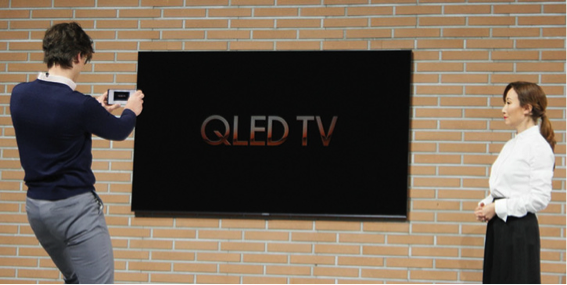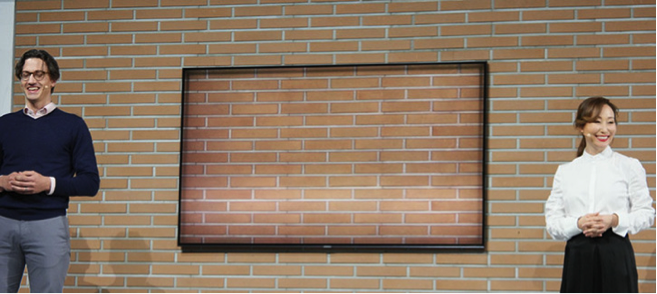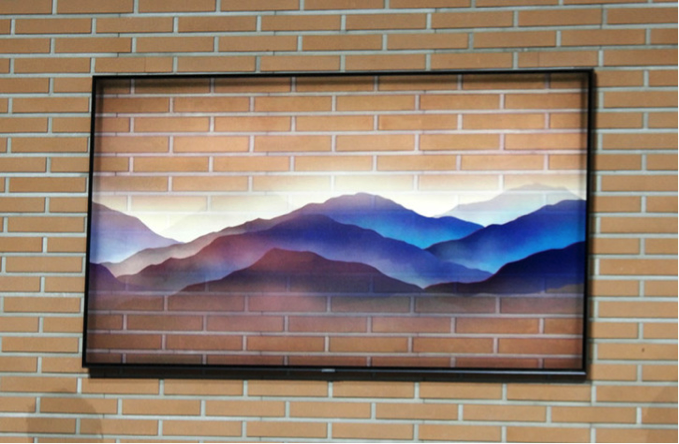Vertical Divider
|
New QLEDs Offer Compelling Gimmicks to Compete with OLEDs March 19, 2018 Samsung’s David Das announced the release of the 2018 QLED TVs and said, “The difference between 2018 QLED and 2017 QLED actually boils down to three big buckets. There’s the picture quality improvements … there’s, of course, the design element which has some really cool features, and there’s the smart capability, which now really expands to encompass the multi-device experience,” Samsung’s philosophy puts picture quality first, without forgetting the crucial elements that can make or break a TV experience. After all, if a TV is a hassle to use or can’t connect to the device you need, does it matter that the picture quality is out-of-this-world good? In our experience, the answer to that question is no. On the picture quality front, QLED has implemented a few new technologies into the LCD panel, which improve its performance in some historically weak areas. Specifically, a new anti-reflective layer helps mitigate “halo effect,” which is caused when a LED-backlit TV displays a bright object against a dark background. Samsung also made the choice to include full array local dimming (FALD) in its Q8F and Q9F top-tier TVs, for enthusiasts who crave the best possible contrast and maximum possible brightness for high dynamic range (HDR) performance. But last year's QLED TVs still had some limitations on image quality. This week in New York City, Samsung held their "First Look" event to show off how far they've come in 2018. In this year's QLED line, Samsung has clearly focused on picture performance, addressing three of LCD technology's main drawbacks: off-axis viewing, lighting uniformity and reproduction of true blacks. Much of the improved picture quality can be attributed to Samsung's decision to go back to full array LED backlighting. While this does make the TVs slightly thicker than their edge-lit counterparts, the improvements to lighting uniformity and contrast speak for themselves. Samsung's 2018 Q8 and Q9 series LED/LCD TVs both utilize a full array of LED backlights, enhanced with advanced local dimming technology, which improves the contrast but reduces the luminance for HDR. Using a scene from La La Land where Ryan Gosling's character appears in a bright spotlight with deep shadow surrounding him, Samsung allowed us to compare the 2018 Q9 model against a few competitive models. This scene and a few others were shown simultaneously on the 2018 Q9 set, a 2017 Q9 QLED model, the Sony Z9 LED/LCD set (full array, from 2017) and even a 2017 LG OLED TV. With the 2018 Q9's superior lighting control, the new Samsung flagship offered noticeable improvements over the Sony and 2017 Samsung sets, and even gave the OLED a run for its money. The 2018 Q9 set was clearly brighter than the LG OLED in this scene and black levels of the areas adjacent to the spotlight were very close to the OLED. The company also highlighted the claim that their 2018 QLED models are capable of accurately reproducing 100% of the P3 color spectrum, and they demonstrated how effective the new screen filter materials are at rejecting ambient room light improving clarity in a bright room without completely sacrificing image quality. And although image quality is clearly in the spotlight this year, it's not the only thing on Samsung's TV agenda. One neat trick the company unveiled at the event is called "Ambient Mode." This feature allows the TV to virtually disappear into the background, while still offering the viewer the ability to read news (New York Times, as in "real news"), see time and weather or display a family photo slide show on the screen. To enable the feature, you need to mount your TV on the wall or on its stand, and then take a picture of the mounted set in its environment. The set then generates an image on screen that matches the background wall, effectively blending into the background. It will even superimpose stock artwork over the background image. Figure 1: QLED Demos I Source: Company
To set up "Ambient Mode a picture of the QLED TV and its background is taken Figure 2: QLED Demos II Source: Company
Once you input the photo, the TV generates an image that matches the background to effectively blend into the wall. Figure 3: QLED Demos III Source: Company
"Ambient Mode" can overlay stock art, news headlines, time, weather or a custom photo gallery over the background. The results vary a bit, depending on lighting. In a demo room at the event, the TV image was virtually identical in color and appearance to the textured wall behind it. On the main stage, the bricks on screen looked slightly redder than the background wall, but the effect was still impressive. The company also highlighted improvements to the user interface; specifically in relation to how easy it is to set up the new TVs and how they integrate with whole home automation. Samsung's TV user interface has been refined in 2018 through integration with the Smart Things app. |
|
|
Contact Us
|
Barry Young
|



